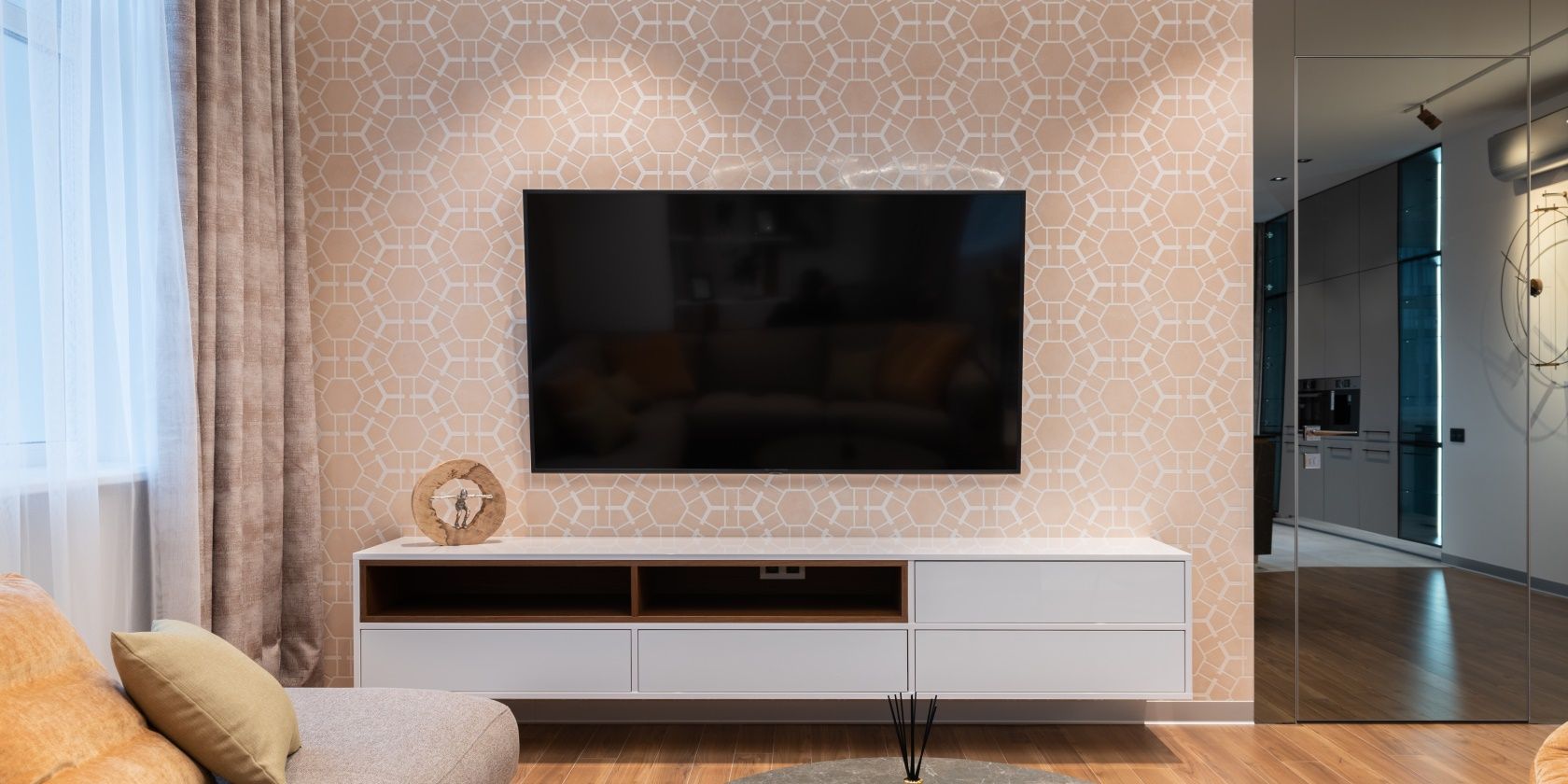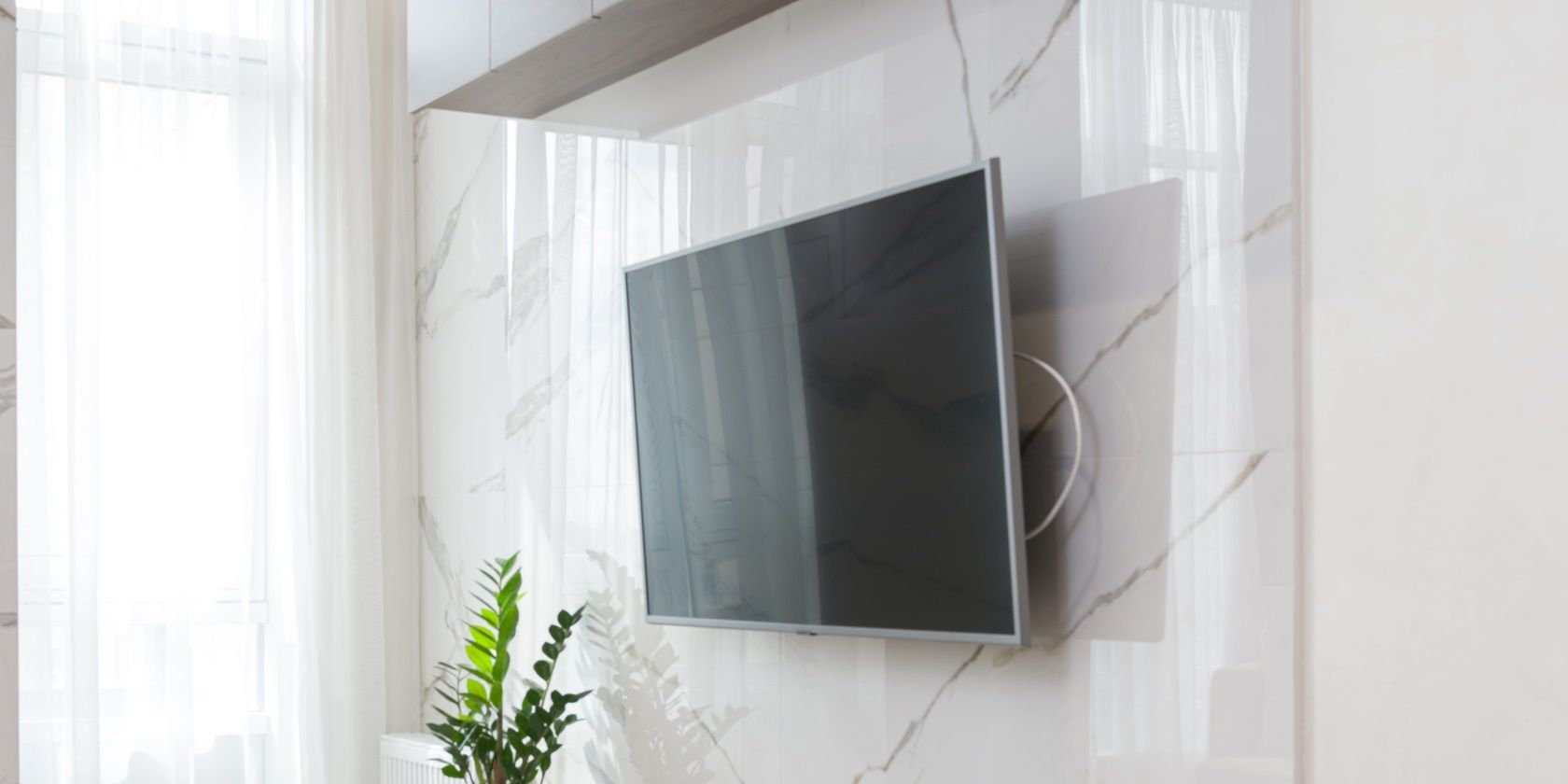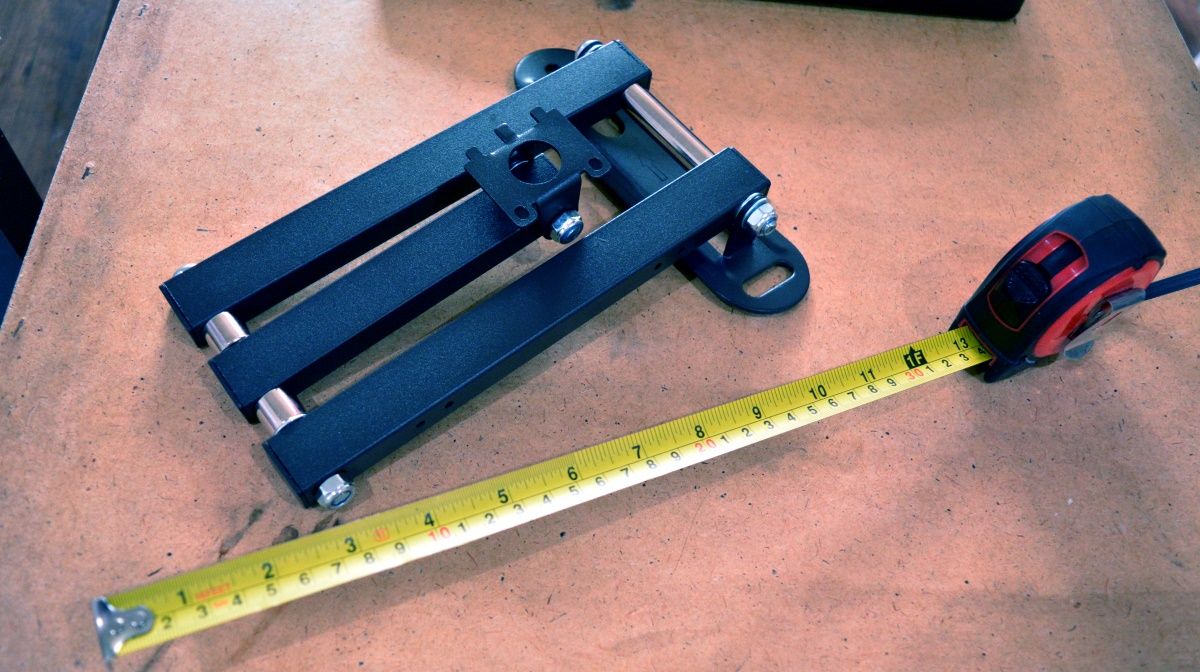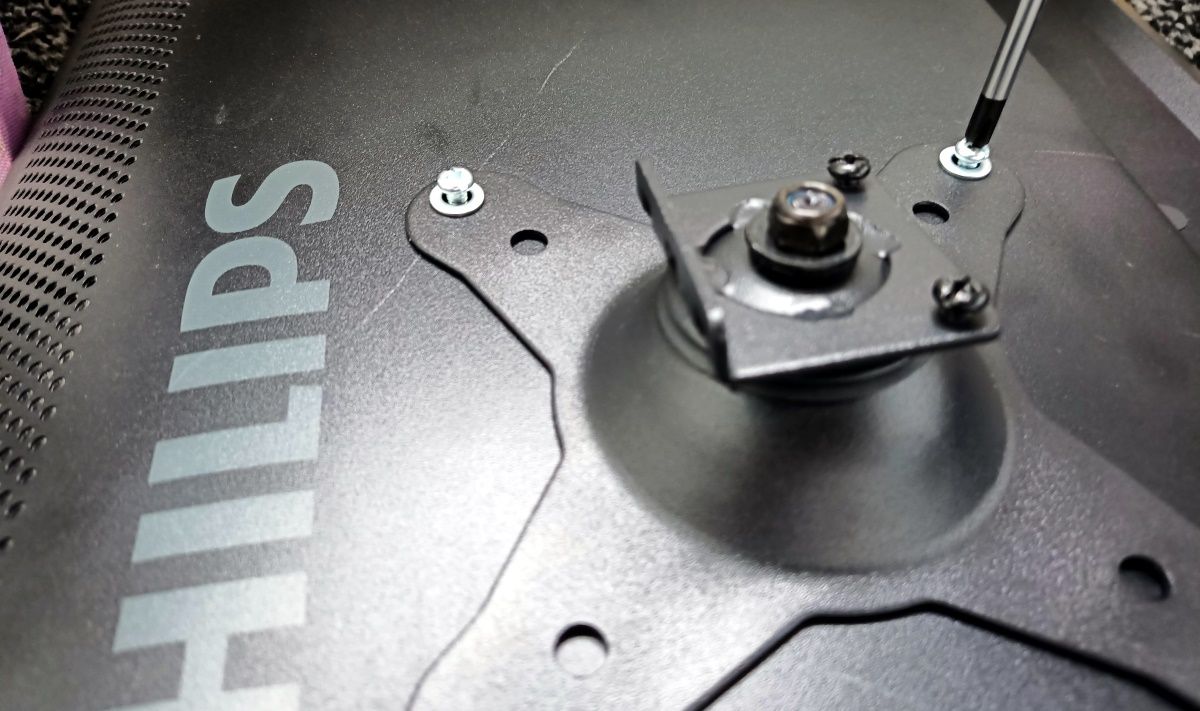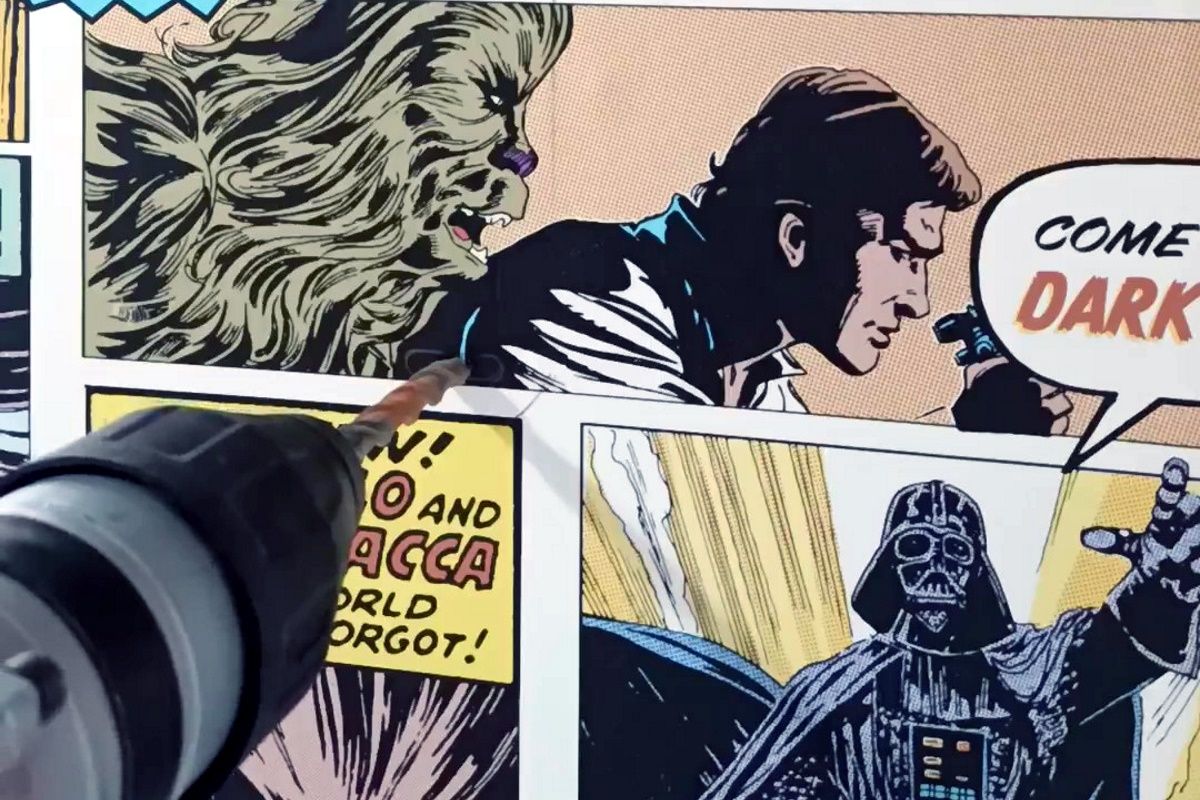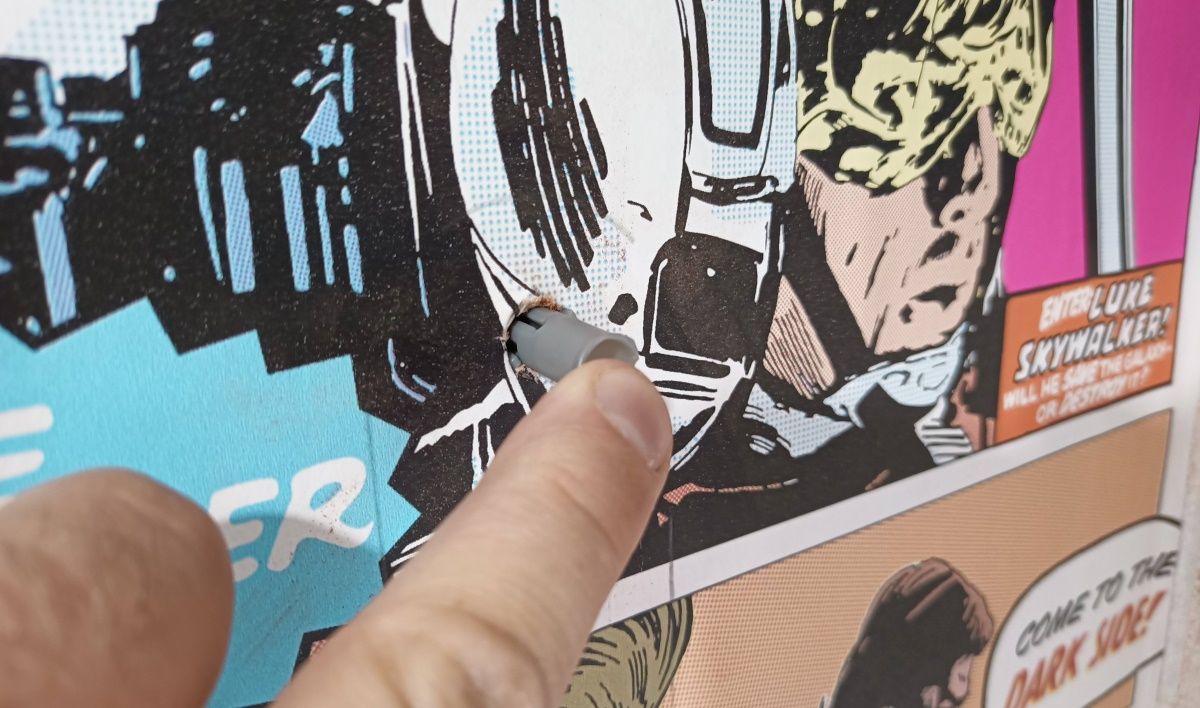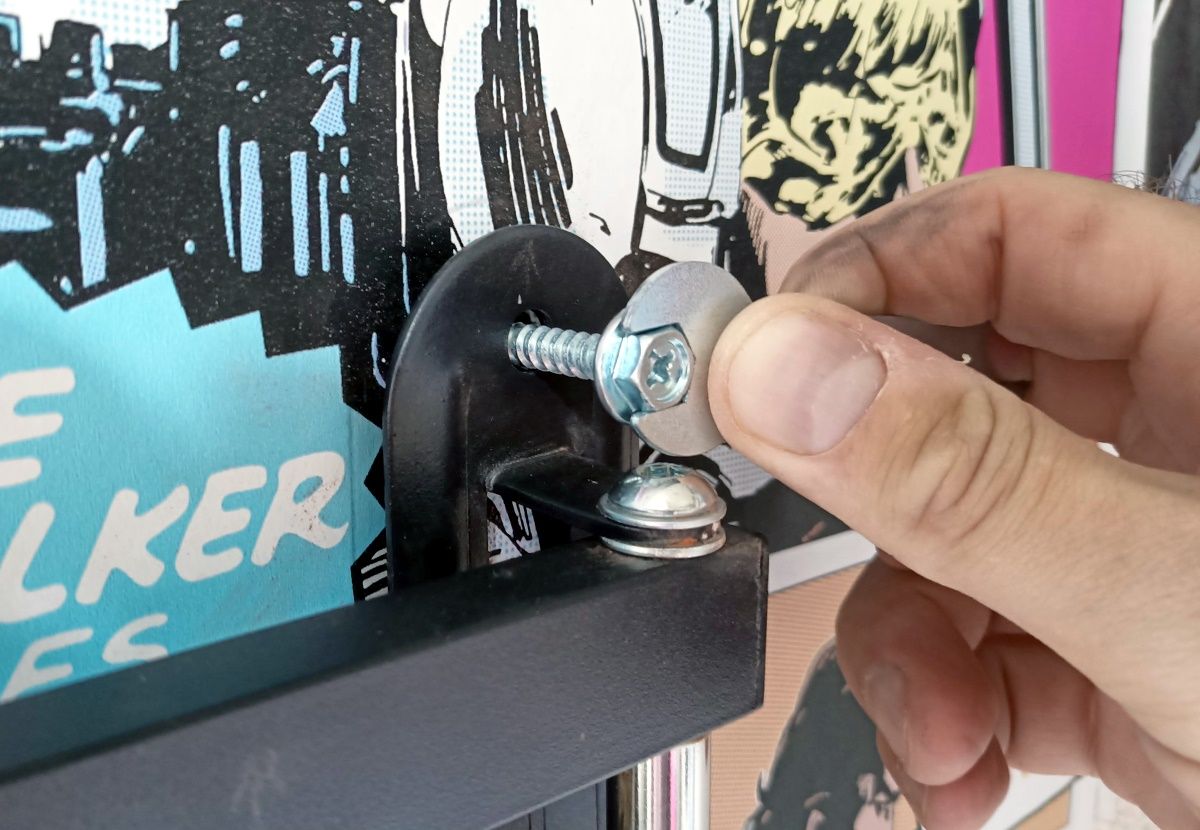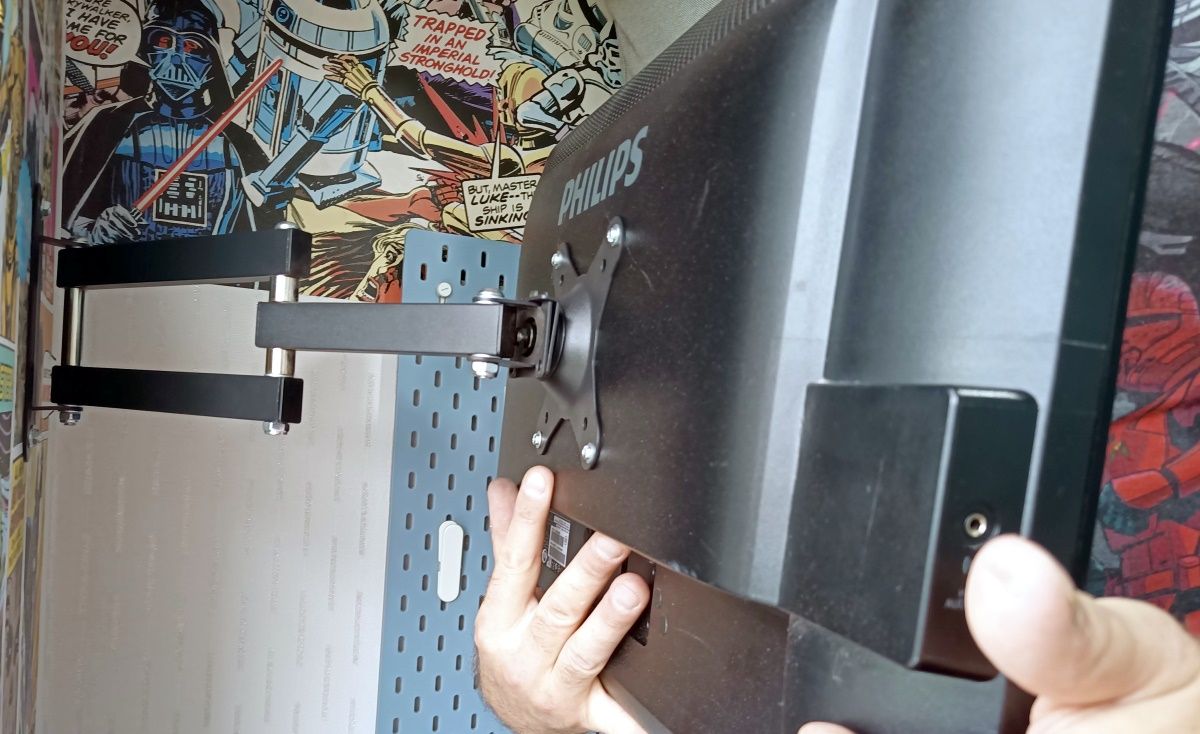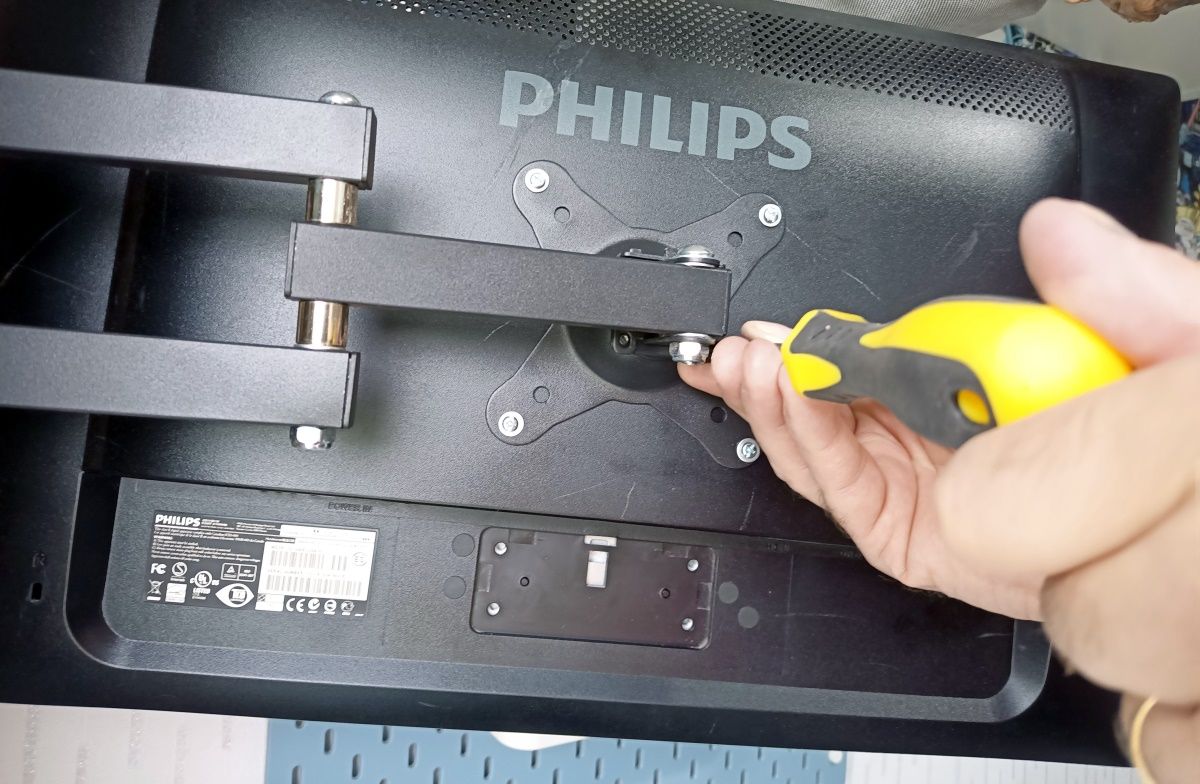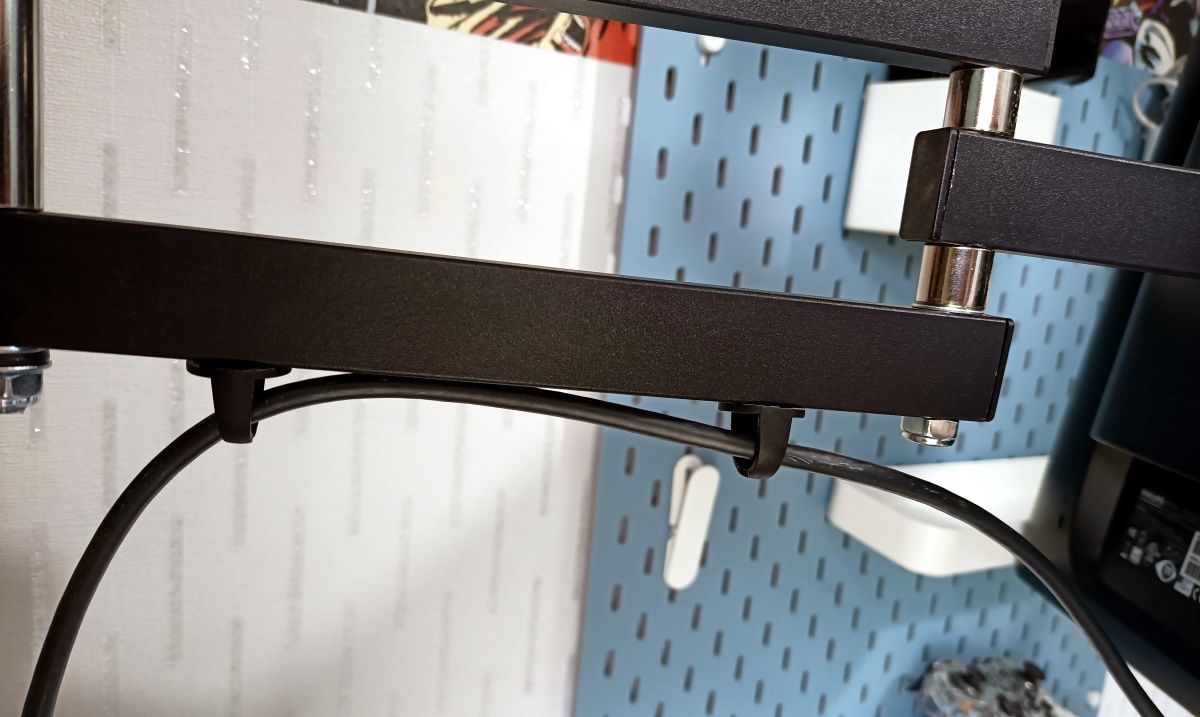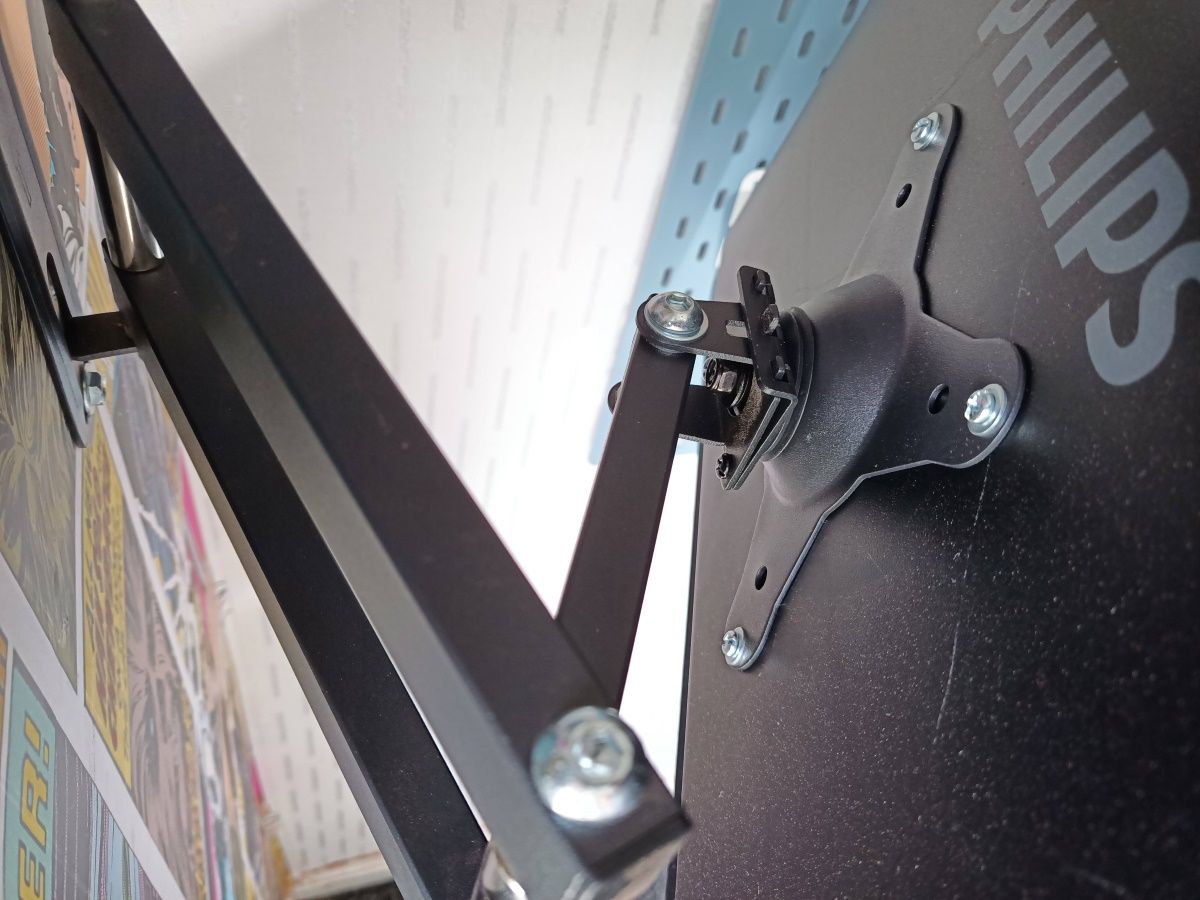Your new TV shipped with a stand, but you really want to mount it on the wall. While it looks okay proudly standing alongside your game console or Blu-ray player, it's the type and size of TV that was made for a cinematic experience.
That means hanging the TV on a wall.
This can be an intimidating process for first timers, but actually a TV wall mount installation is straightforward. Here's everything you need to know.
Why Hang Your TV on a Wall?
Before you begin, consider why you're hanging the TV on the wall.
Is it for movies? Is it for games? Perhaps it's because the TV looks better up there (you've had someone hold it in place while you check or used a piece of card cut to size), or maybe you're rearranging your room and have decided that the entertainment center furniture has to go.
There is no right or wrong answer to this. But you have to be sure that you know what you're letting yourself in for. Mounting a TV on the wall means adopting a new approach to cable management, and that is just the beginning.
What You Need to Know Before Mounting a TV
You can't just go ahead and hang your TV on a wall. Not only does it require specific hardware, various checks and measurements are needed.
- Type of wall: a brick wall will support almost any TV mount, if correctly secured. Stud walls are less likely, without the correct precautions and fittings. Wooden walls depend largely on the contruction - attaching to a thicker wall or partition supports is more likely to hold the mount than hanging the TV on a standard piece of hardboard.
- Stud check: before proceeding, use a stud detector to find any pipes, cables, or other artefacts in the wall. You don't want to be drilling into these.
- Size of TV: the size of the TV matters, from suiting the wall and not overly dominating the room to impacting the type and size of the mount. Most mounts are VESA standard, so as long as your TV has four reinforced screw points on the back, the mount should fit.
Again, some consideration should be given to cable management. Will cables be routed through subducting? Is there a plan to remove a portion of the wall to feed cables along, or for additional holes to route cables through? If so, this needs to be ready to put in place as soon as you've hanged the TV on the wall.
Equipment You Need for a TV Wall Mount Installation
Before proceeding, ensure you have the following equipment ready to use:
- Stud detector
- Power drill
- Tape measure
- Electric/manual/ratchet screwdriver
- Wall mount and mounting components (typically wall anchors, hex cap screws, small spanner)
- Pencil
If a power supply is required for the power drill, ensure this is readily accessible or an extension cable connected.
Choose the Right Type of TV Wall Mount
Different types of TV wall mount are available. The one you choose will depend on the size of the TV, the wall, the purpose for mounting, and the viewing angle.
- Fixed TV mounts are intended for large flat screen TVs to be attached to large, flat walls. They have some up/down tilt, but that's about it.
- Swivel or angled mounts are ideal for corners or situations where the TV or monitor needs to be moved left or right from time to time. This type swings left and right, with some up/down tilt. Some models have an extended, articulating arm, useful for finding a specific position, as well as "folding" the TV back into a desired position.
- Tilting mounts allow better viewing, particularly when mounted high on a wall.
- Full-motion mounts, meanwhile, allow full control over the position of the TV. Adjustments can be made left, right, up, and down, with tilting, rotating, and sometimes even a telescopic arm.
With the right wall mount chosen, you'll be ready to start your TV wall mount installation.
Be sure to spend some time familiarising yourself with the box contents and how they relate to your TV. There are many different TV mounting kits available, each with the same key principle of hanging a TV on your wall, but with key differences between mounts of the same type, not to mention others.
Hang a TV on Your Wall in 5 Steps
With your equipment, tools, and wall mount gathered, you can attach your TV to the desired wall in just five steps.
1. Measure and Plan
Once you're confident you can use the wall without drilling through any cables or pipes, it's time to measure. While you probably know the diagonal screen size of your TV, be sure to check the height and width of the device too. For tight spaces, knowing the depth of the TV might also be useful.
Next, measure the space where the TV will be mounted. It might be worth holding the TV up in the space (get a friend to help) to give you an idea of the fit. If this isn't practical, cut some cardboard to size as noted above. This will help visualize and plan the project better. You should also sit in your usual watching position and get an idea of how high the TV is. If there is a chance that watching TV could result in neck pain, plan for mounting in a slightly lower position.
Finally, measure the wall mount. Ensure it will fit the wall and the TV. Confirm the fittings are suitable for the wall type and recheck the wall with the stud detector before proceeding.
2. Attach the TV to the Mounting Plate
Perhaps the simplest step of the process is attaching the mounting plate to the TV. In the mounting kit, you'll typically find the mounting plate is attached to the mount. So, remove the mounting plate before proceeding.
Mounting plates attach to the back of the TV with four screws. They use the VESA standard, with reinforced screw holes on the back of the TV or monitor.
Securely screw the mount to the TV according to your TV mounting kit's instructions. Be sure to get the orientation right - fitting the mount upside down is easy, but will result in the TV being mounted the wrong way up!
Set the TV aside until you're done.
3. Fix the TV Mount to the Wall
Some TV mounts come with a printed "map" to pin on your wall and mark out the drill holes. If this isn't included, hold the mount to the wall and with a pencil mark the holes you will be using. Next, choose a suitable drill bit and set the correct depth, then drill the marked holes.
Note that if you're fixing the mount to a wooden wall, you can screw directly into the wall.
When you're done drilling, vacuum the holes so they're free of dust, and push in the anchors.
Clean the wall with a slightly damp cloth, then hold the TV mount in place and begin fixing it to the wall.
Usually, hex cap screws are used for this, particularly with mounts designed for larger TVs. However, you might have a kit that includes standard screws or those with a hex key (Allen key).
Tighten each screw in turn, not too tight, to ensure the mount doesn't or bend.
4. Attach the Mounting Plate and TV to the Wall Mount
This is the good part. Life the TV – get help for large screens or heavier displays – and attach it to the mount as per the kit instructions.
Typically, this will involve "hooking" the mounting plate onto the mount. For widescreen TVs that require two people to install, both will need to identify the hooks and lower the TV into place. If it's a smaller TV or computer monitor, you should be able to hook it on with ease without assistance.
Next, secure the TV to the mount. One or two securing screws or nuts is usually provided for this; again, check the mounting kit instructions.
Finally, take the time to view the TV from your usual watching position and adjust the tilt if necessary.
5. Manage Your Cables
The last part of mounting a TV on the wall is to ensure the cables are tidy. Most kits for hanging a TV on the wall will include some method of cable management. Check for plastic cable ties, or strips of hook-and-loop fasteners, which can be used to wrap the cables to the TV mount and help with routing.
As noted earlier, subducting strips are also a good idea, but if you've planned to remove some of the wall/plaster or drill a hole for cable routing, now is the time to thread the cables through.
Now You Know How to Mount a TV on a Wall
While requiring a bit of work and some electric tools, a TV wall mount installation is uncomplicated. After reading the above, you should be ready to start.
With your TV hanging on the wall the way you want, you're ready to enjoy movies, TV shows, maybe some gaming. There's a definite cinematic feel to fixing a TV to the wall, a piece of DIY that is particularly suited to home cinema setups.
All you need now is the right media center solution!

